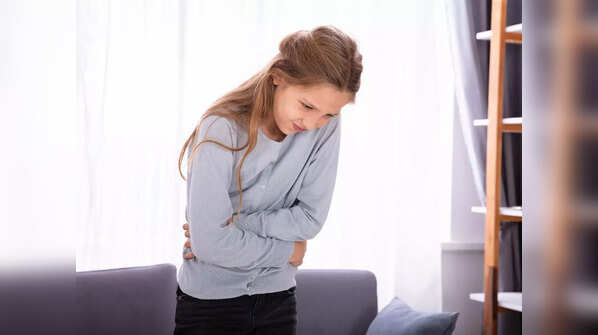- News
- lifestyle
- parenting
- toddler-year-and-beyond
- How to identify UTI in kids
How to identify UTI in kids

Urinary tract infections (UTIs) in kids: What to know
The urinary tract is said to be the human body's drainage system that helps get rid of the urine. It includes two kidneys, two ureters, a bladder, and a urethra. A healthy urinary tract system ensures overall health and wellness. However, it is prone to infections that occur due to bacteria, also called urinary tract infections (UTIs).
UTIs are common among adults and children, especially in women and young girls. It can be classified into two types: upper and lower UTI. An upper UTI is when there is a kidney infection or an infection of ureters, the tubes connecting the kidneys to the bladder. A lower UTI refers to a bladder infection or an infection of the urethra, the tube that carries urine from the bladder out of the body.
Also read: Child obesity: Factors that put your child at risk

What causes UTI in children?
According to the National Health Service (NHS) Inform, most UTIs in children are caused by bacteria from the digestive system entering the urethra.
This could happen in several ways.
When a child wipes from back to front after visiting the toilet, it could increase their chances of UTI. This is because the bacteria is most likely to enter the urethra, travel up to the bladder, ureters, and kidneys, and begin to grow. In case of babies, small particles of their poo consisting of bacteria could enter their urethra, and expose them to the risk of an infection.

General symptoms to watch out for in kids
General signs that may suggest your child is unwell include:
- A high temperature (fever)
- Vomiting
- Tiredness and lack of energy (lethargy)
- Irritability
- Difficulty in feeding
- Yellowing of the skin and whites of the eyes (jaundice) in very young children

Specific symptoms of UTI
UTI can also cause specific urinary symptoms. These include:
- Pain or a burning sensation when peeing
- The need to pee frequently
- Deliberately holding in their pee
- Bedwetting
- Pain in their tummy
- Unpleasant-smelling and cloudy pee

How to cut down the risk of UTI in children?
Drinking enough liquids, following good bathroom and diaper habits, wearing loose-fitting clothes, and getting treated for related health problems may help prevent a UTI in a child or teen, says the National Institute of Diabetes and Digestive and Kidney Diseases (NIDDK).

Treatment options
UTIs or bladder infections in children can be treated with antibiotics, medicines to combat bacteria.
Which antibiotic your child takes is based on age, any allergies to antibiotics, and the type of bacteria causing the UTI, as per NIDDK. Children older than 2 months usually take an antibiotic by mouth—as a liquid or as a chewable tablet, the health body adds.
At-home treatments include drinking plenty of water and using a heating pad on a child’s back or abdomen to ease pain.








